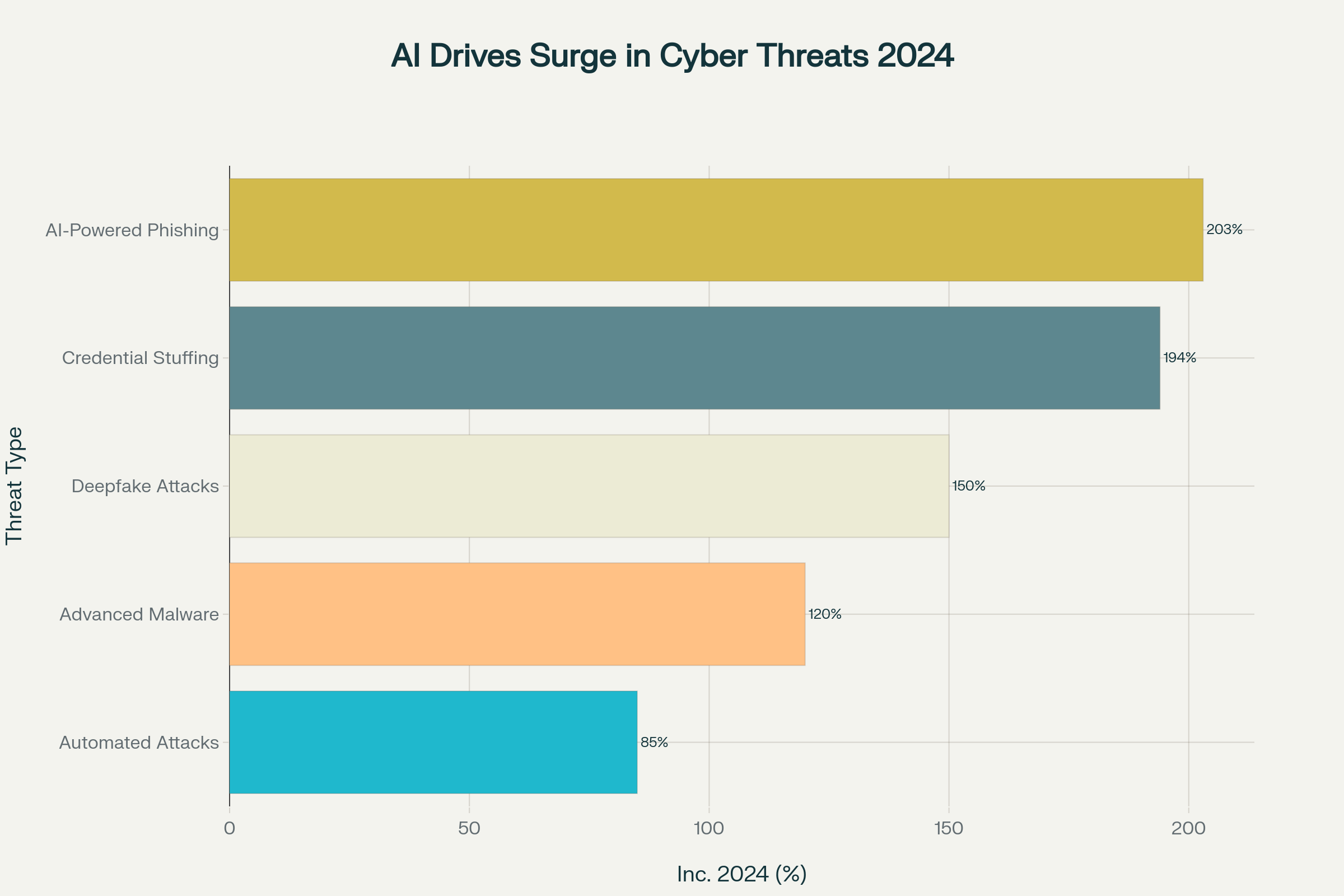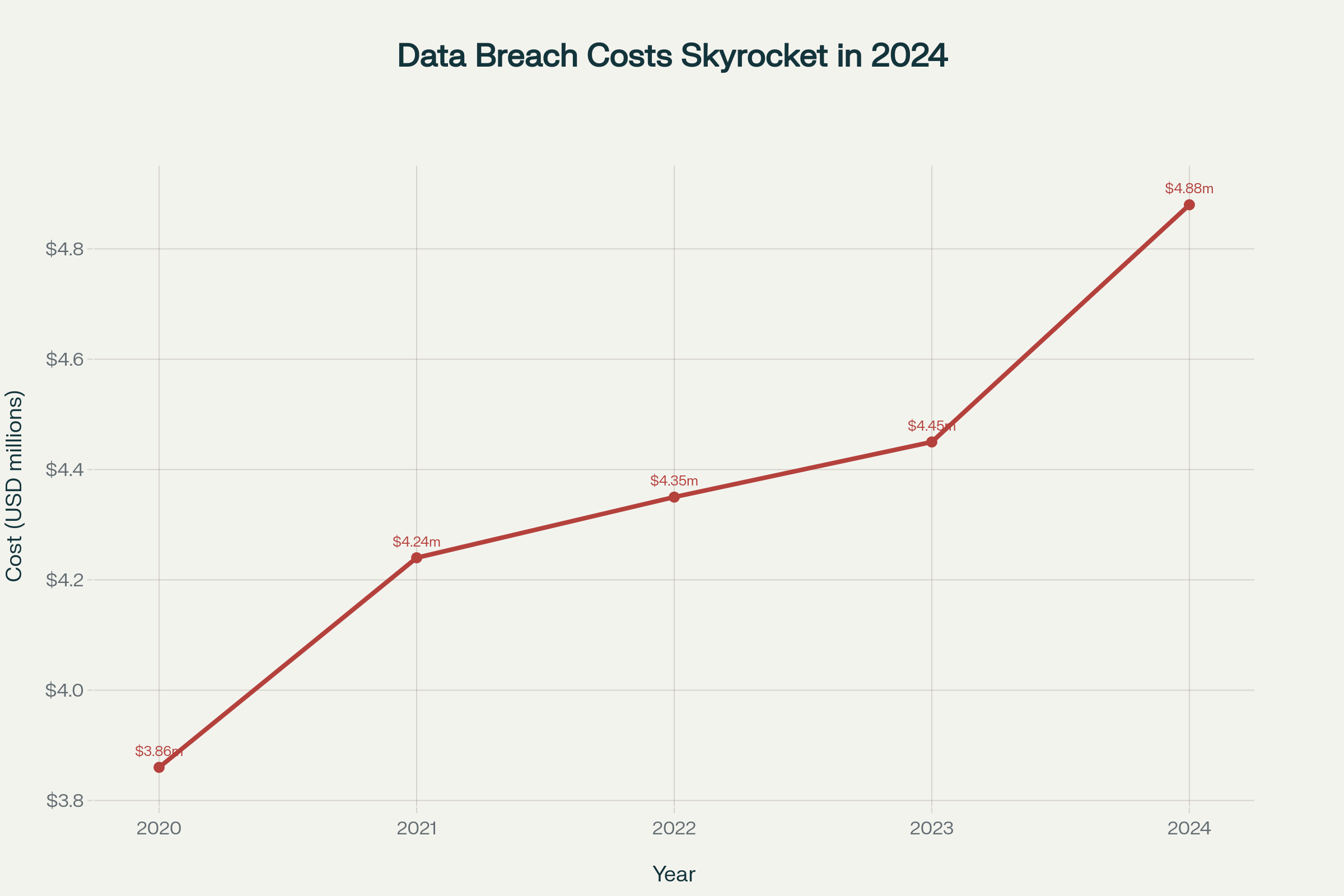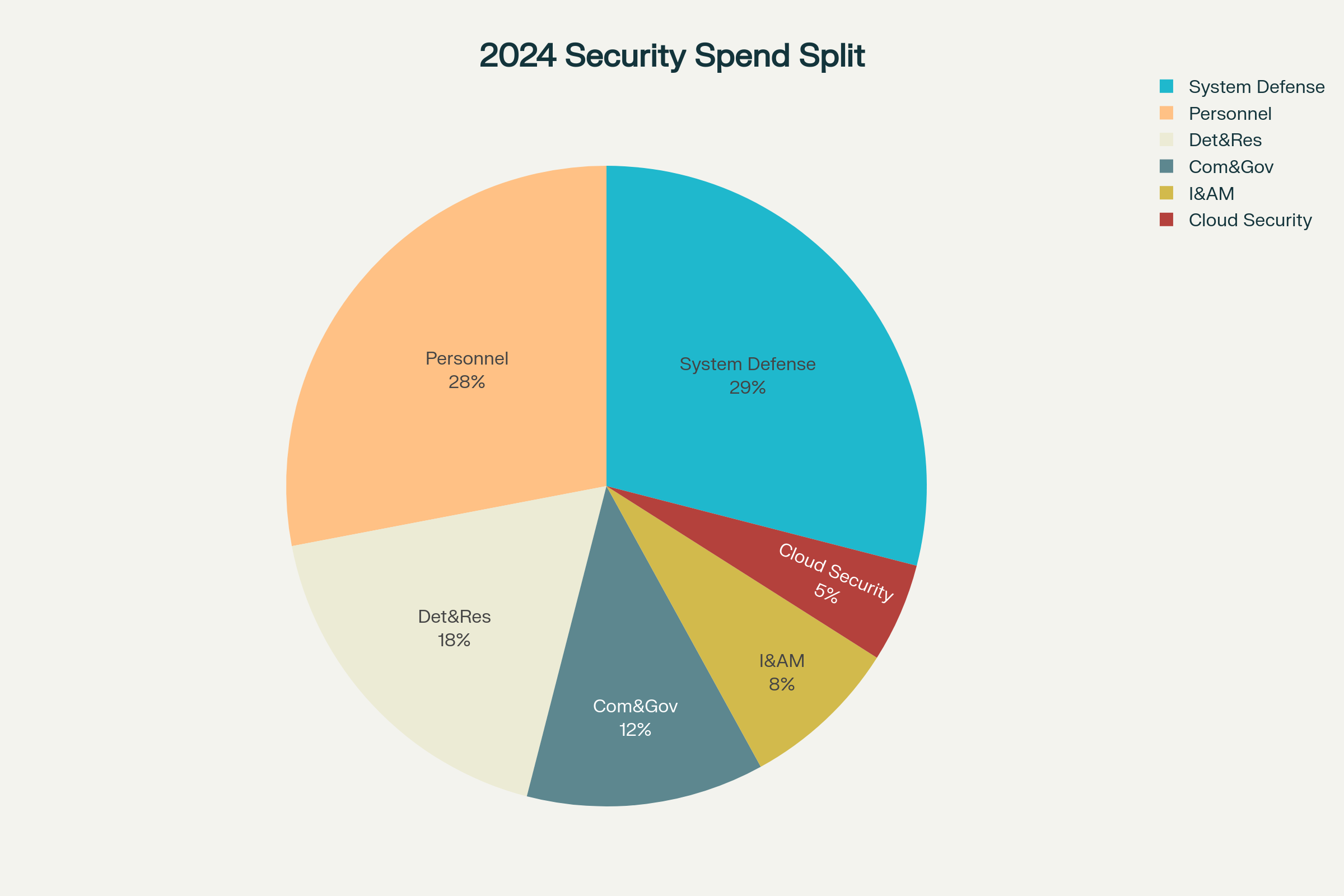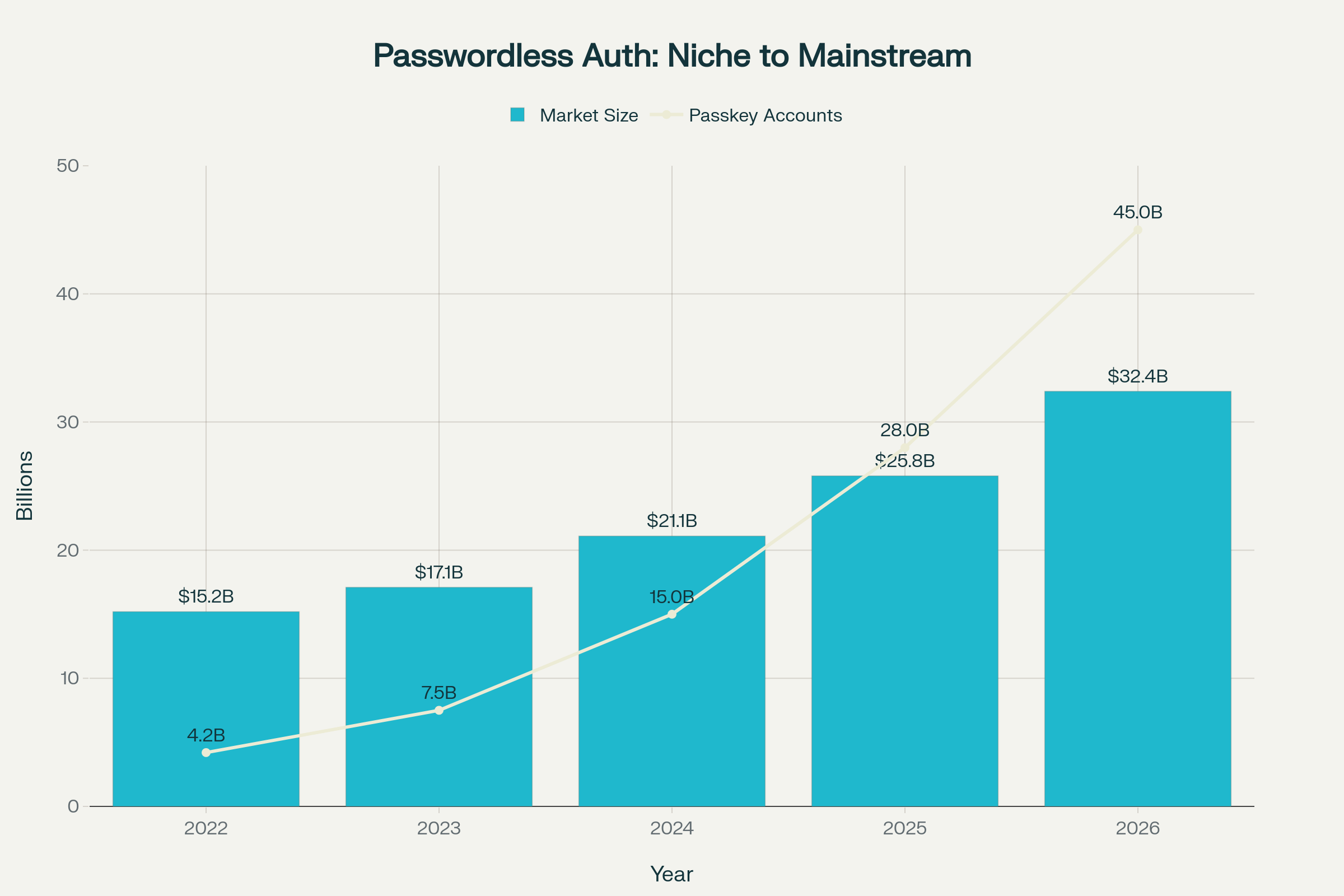Ever feel like your password is a flimsy lock on a treasure chest? You’re not alone. In today’s digital world, where breaches and hacks make headlines almost daily, relying on traditional passwords is like using a paper shield in a cyber war. But here’s what’s changed dramatically since we last looked at this issue: artificial intelligence has weaponized cybercrime, enterprise breaches have skyrocketed to unprecedented levels, and the financial cost of weak password security has reached crisis proportions.
The numbers tell a stark story. Data breach costs have reached an all-time high, jumping 10% in 2024 to an average of $4.88 million per incident. This represents the largest single-year increase since the pandemic and shows no signs of slowing down. For enterprises still clinging to password-based security, the message is clear: the cost of inaction has never been higher.
AI Has Turned Cybercrime into a Weapons Factory
The cybersecurity landscape has fundamentally shifted in 2024, with artificial intelligence becoming the primary accelerant for sophisticated attacks. What once required significant human expertise and time can now be automated and scaled to unprecedented levels.

AI weaponization has led to explosive growth in cyber threats, with AI-powered phishing attacks increasing by 203% in 2024
The statistics are sobering. AI-powered phishing attacks have exploded by 203% in 2024, while credential stuffing attacks have surged by 194%. These aren’t just incremental improvements in attack methods – they represent a fundamental evolution in how cybercriminals operate. Where traditional phishing emails were often riddled with spelling errors and obvious red flags, AI-generated attacks are now virtually indistinguishable from legitimate communications.
AI has enabled attackers to:
- Personalize at scale: Using scraped data from social media and corporate websites to craft hyper-targeted messages
- Automate reconnaissance: Rapidly identifying vulnerabilities and potential targets across entire networks
- Accelerate attack timelines: Reducing typical attack preparation from weeks to hours
- Evade detection: Creating malware that adapts and evolves to bypass traditional security measures
The implications for password security are particularly dire. With AI tools readily available, attackers can now conduct sophisticated social engineering campaigns that make even security-conscious employees vulnerable to credential theft.
The Enterprise Breach Epidemic: A $677 Million Wake-Up Call
Enterprise security breaches have reached epidemic proportions, with 70% of organizations experiencing at least one significant cyberattack in 2024. But the true cost extends far beyond the headlines. Recent analysis reveals that the actual long-term financial impact of major breaches averages $677 million – nearly 140 times higher than conventional estimates.

Data breach costs have reached an all-time high in 2024, with the average cost per breach jumping 10% to $4.88 million
The breach statistics paint a disturbing picture:
- 5.5 billion accounts compromised in 2024 alone, nearly 8 times more than in 2023
- 81% of hacking-related breaches stem from weak or reused passwords
- 49% of all data breaches involve compromised passwords
- 16 billion credentials were exposed in 2024, representing the largest credential leak in history
The Hidden Costs of Password-Related Breaches
The financial impact of password-related security failures extends far beyond immediate remediation costs. Companies face:
Lost Business and Operational Downtime: Accounting for 75% of breach cost increases, these impacts can persist for years
Regulatory Fines and Compliance Costs: With stricter data protection laws worldwide, penalties continue to escalate
Reputational Damage: Customer churn and brand damage that can take years to recover from
Incident Response and Recovery: Specialized teams, forensic investigation, and system restoration costs
Legal and Litigation Expenses: Class-action lawsuits and regulatory investigations

Enterprise security spending is dominated by System Defense (29%) and Personnel (28%), accounting for over half of all cybersecurity budgets
The Password Problem Has Gotten Worse, Not Better
Despite years of security awareness campaigns, password hygiene has actually deteriorated. The average person now manages over 250 passwords, up from 100 just four years ago. This explosion in digital accounts has led to predictable human behavior:
- 89% of people admit to reusing passwords across multiple accounts
- 59% of adults use birthdays or names in their passwords
- 13% of Americans use the same password for every account
- 28% do nothing special to manage or secure their passwords
The vulnerability is staggering. Modern password-cracking tools can break 70% of weak passwords in less than one second. Even passwords that once seemed secure are now easily compromised:
- 8-character passwords: Can be cracked in 0.0001 seconds
- 12-character passwords: Still vulnerable to AI-enhanced attacks
- Commonly used passwords: “password,” “123456,” and company names remain prevalent across all industries
The Phishing Frenzy: AI-Powered Attacks Target Your Weakest Link
Phishing attacks have evolved from crude scams to sophisticated psychological warfare. AI has transformed these attacks from easily detected nuisances to highly convincing replicas of legitimate communications.
Modern AI-powered phishing campaigns can:
- Replicate writing styles: Mimicking specific individuals or organizations with startling accuracy
- Generate contextual content: Creating timely, relevant messages that align with current events or company activities
- Scale personalization: Crafting thousands of unique, targeted messages simultaneously
- Adapt in real-time: Learning from failed attempts to improve success rates
The result? A 60% success rate for AI-generated phishing emails, comparable to attacks crafted by human experts. For organizations relying on password-based security, this represents an existential threat.
Passwordless MFA: Your Digital Bodyguard Against AI Attacks
The solution isn’t just stronger passwords – it’s eliminating them entirely. Passwordless multi-factor authentication (MFA) represents the most significant evolution in cybersecurity since the invention of the firewall. It’s not just about stronger security; it’s about making your life easier while rendering AI-powered attacks largely ineffective.
The Passwordless Advantage
Bye-Bye, Password Fatigue: No more memorizing complex combinations or constantly resetting forgotten passwords.
Hello, Biometrics and Security Keys: Use something unique to you – a fingerprint, a face scan, or a physical security key like a YubiKey. It’s like having a digital bodyguard that can’t be fooled by AI.
Phishing-Proof: Since you’re not typing anything, hackers can’t steal your credentials, even with the most sophisticated AI-powered attacks.
AI-Resistant: Biometric data and hardware keys can’t be replicated or generated by AI systems.

The passwordless authentication market is experiencing explosive growth, with market size projected to reach $32.4 billion by 2026 and 45 billion accounts supporting passkeys
The market momentum is undeniable. The passwordless authentication market has grown from $15.2 billion in 2022 to $21.1 billion in 2024, with projections reaching $32.4 billion by 2026. More importantly, the number of accounts supporting passkeys has doubled to 15 billion in 2024, with Amazon alone reporting 175 million passkeys created.
Enterprise Security Spending: Where the Money Goes
Understanding how enterprises allocate their security budgets reveals both priorities and vulnerabilities. Current spending patterns show a focus on reactive measures rather than proactive authentication improvements.
security_spending_breakdown.csv
Generated File
The data reveals that while organizations spend heavily on system defense (29%) and personnel (28%), identity and access management – the foundation of passwordless security – receives only 8% of budgets. This misallocation leaves organizations vulnerable to the very credential-based attacks that are driving the current breach epidemic.
YubiKeys: Your Passwordless Powerhouse
YubiKeys continue to lead the hardware-based passwordless revolution. These devices are particularly impressive because they eliminate the attack vectors that AI-powered threats exploit most effectively. Imagine a tiny key that plugs into your computer or phone, replacing passwords altogether. They’re not only secure but also incredibly easy to use.
Unlike cloud-based passkeys that can potentially be targeted by sophisticated AI attacks, YubiKeys store your credentials right on the physical device, adding an extra layer of protection that’s impossible to replicate digitally. Since 2018, YubiKeys have been supporting passkeys, and their hardware-based approach provides security that no AI system can compromise.
Password Managers: Your Transition Team
The transition to a passwordless world might sound intimidating, but password managers like Keeper can help bridge the gap. They act as a secure vault for your existing passwords and can seamlessly integrate passkeys as you adopt them. It’s like having a personal assistant to manage your digital keys during the transition period.
The importance of this transition period cannot be overstated. With 16 billion credentials exposed in 2024 and AI-powered attacks becoming more sophisticated daily, organizations need robust interim solutions while implementing passwordless infrastructure.
The Business Case for Passwordless: ROI That Speaks Volumes
The financial argument for passwordless authentication has never been stronger. Consider these compelling statistics:
Cost Savings: Organizations using extensive AI and automation in security prevention save an average of $2.2 million per breach
Productivity Gains: Elimination of password reset requests can reduce IT help desk calls by 20-50%
Compliance Benefits: Simplified audit requirements and reduced regulatory risk
User Experience: 88% of users who see passkey benefits successfully complete enrollment
The Path Forward: Building Your Passwordless Strategy
The evidence is overwhelming: the password era is ending, and organizations that fail to adapt will face increasingly severe consequences. The combination of AI-powered attacks, escalating breach costs, and mature passwordless technologies creates an urgent imperative for change.
Immediate Actions for Organizations:
- Assess Current Exposure: Conduct a comprehensive audit of password-based systems and credentials
- Implement Interim Protections: Deploy robust password managers and enhanced MFA where passwordless isn’t immediately feasible
- Pilot Passwordless Solutions: Start with high-risk users and critical systems
- Educate and Train: Build security awareness around AI-powered threats and passwordless benefits
- Plan for Scale: Develop a roadmap for organization-wide passwordless adoption
The Zero Trust Integration
Modern passwordless strategies must align with Zero Trust security frameworks, which assume breach and require continuous verification. This approach, mandated by federal agencies and adopted by leading enterprises, makes passwordless authentication not just beneficial but essential.
Educate, Empower, Embrace: The Human Factor
While technology is critical, user awareness remains key. We need to educate ourselves and others about the evolving threat landscape, particularly the role of AI in modern cyberattacks. When users understand that AI can now craft perfect phishing emails and crack passwords in seconds, the value proposition of passwordless authentication becomes crystal clear.
The statistics show that once users experience passwordless authentication, adoption rates soar. Sony Interactive Entertainment reported an 88% successful enrollment rate for passkeys, along with a 24% reduction in sign-in time. This isn’t just about security – it’s about creating a better user experience that people actually want to use.
A Safer Digital Future Awaits
The shift from passwords to passkeys isn’t just a technological upgrade – it’s a fundamental reimagining of digital security for the AI age. With cybercriminals deploying increasingly sophisticated AI tools, our defense strategies must evolve accordingly.
The numbers speak for themselves: breach costs at all-time highs, AI-powered attacks exploding across all vectors, and billions of credentials compromised annually. Yet the solution exists, mature and ready for deployment. Passwordless authentication represents our best defense against AI-enhanced cybercrime and the key to sustainable digital security.
The organizations that recognize this reality and act decisively will not only protect themselves from the current threat landscape but position themselves advantageously for the future. Those that delay will find themselves increasingly vulnerable to AI-powered attacks that render traditional password defenses obsolete.
Ready to Take the Next Step?
The data is clear, the technology is mature, and the threat landscape is evolving rapidly. If you’re interested in exploring how passwordless security can protect your organization from AI-powered attacks while reducing costs and improving user experience, our team at OnPoint would be happy to discuss how it can benefit you or your organization.
The question isn’t whether to adopt passwordless authentication – it’s how quickly you can implement it before the next AI-powered attack finds your organization’s weakest link.
Let’s schedule a quick 20-minute chat to explore the possibilities and protect your digital future!

